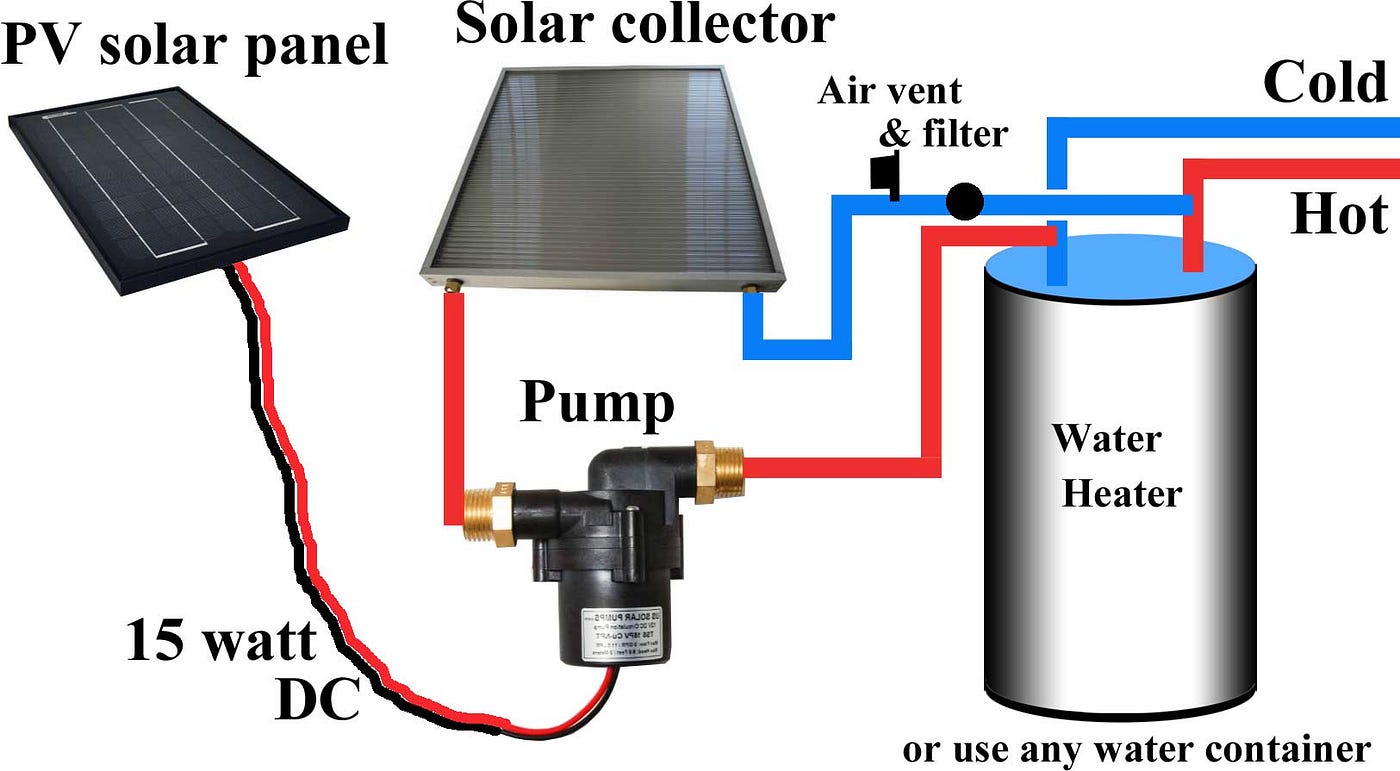Understanding the Technology Behind Solar Water Heaters
As the world moves towards more sustainable energy solutions, solar water heaters are becoming an increasingly popular choice for homeowners and businesses alike. But how exactly do these systems work? In this blog, we’ll delve into the technology behind solar water heaters, exploring the components, working principles, and types of systems available.
How Solar Water Heaters Work
Solar water heaters use the sun’s energy to heat water, reducing or eliminating the need for electricity or gas. The basic principle behind these systems is simple: solar collectors capture sunlight and convert it into heat, which is then used to warm the water. The heated water is stored in a tank, ready for use when needed.
Key Components of a Solar Water Heater
-
Solar Collectors:
- These are the panels or tubes that absorb sunlight and convert it into heat. There are two main types:
- Flat-Plate Collectors: Resembling a traditional solar panel, these collectors are composed of a dark absorber plate that absorbs sunlight and transfers the heat to a fluid running through pipes.
- Evacuated Tube Collectors: These consist of multiple glass tubes with a vacuum between them, which reduces heat loss. They are more efficient in colder climates.
- These are the panels or tubes that absorb sunlight and convert it into heat. There are two main types:
-
Heat Transfer Fluid:
- This fluid circulates through the solar collectors, absorbing the heat and transferring it to the water in the storage tank. In some systems, water itself is used as the heat transfer fluid, while in others, a mixture of water and antifreeze is used to prevent freezing in colder climates.
-
Storage Tank:
- The heated water is stored in a well-insulated tank to minimize heat loss. The tank may have an auxiliary heater to ensure hot water availability during cloudy days or at night.
-
Pump and Controls:
- In active solar water heating systems, pumps circulate the heat transfer fluid between the collectors and the storage tank. A control unit manages the system, ensuring that the fluid circulates only when the collectors are hotter than the water in the tank.

Types of Solar Water Heaters
There are two primary types of solar water heating systems:
-
Active Systems:
- Direct Circulation Systems: These systems pump household water through the collectors and into the home. They are ideal for areas that do not experience freezing temperatures.
- Indirect Circulation Systems: These use a heat transfer fluid that circulates through the collectors and a heat exchanger, which then heats the water. These systems are more suitable for colder climates.
-
Passive Systems:
- Integral Collector-Storage Systems: Also known as ICS or batch systems, these store water in the collector itself. They are less efficient than active systems but are simpler and more reliable.
- Thermosyphon Systems: In these systems, water flows through the system naturally due to the difference in density between hot and cold water. They are more efficient than integral collector-storage systems but require a roof that can support the heavy storage tank.
The Science Behind Solar Water Heating
The efficiency of solar water heaters is largely dependent on the amount of solar energy they can capture. This depends on factors such as the angle and orientation of the collectors, the local climate, and the type of collector used. The science behind solar water heaters is rooted in thermodynamics, specifically the transfer of heat from the sun to the water through radiation, conduction, and convection.
- Radiation: Solar radiation is the primary energy source. The collector’s surface absorbs this radiation and converts it into heat.
- Conduction: The absorbed heat is transferred to the heat transfer fluid or water through conduction.
- Convection: In passive systems, convection drives the movement of heated water, with no need for pumps.
Advantages and Considerations
Solar water heaters offer numerous benefits, including reducing energy bills, decreasing reliance on fossil fuels, and minimizing environmental impact. However, several factors need consideration before installation:
- Climate: Solar water heaters are most effective in sunny regions, though they can be used in colder climates with appropriate systems.
- Space: Adequate roof space is required for the solar collectors.
- Initial Cost: While solar water heaters can be more expensive upfront, the long-term savings typically offset this initial investment.